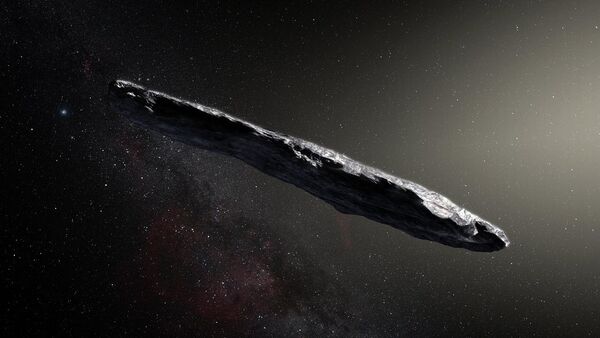The cigar-shaped object Oumuamua cannot be a hydrogen iceberg, claims a new study conducted by an international team of scientists from South Korea and the United States. The findings of the research published on 17 August in The Astrophysical Journal of Letters, dispute the study by two Yale professors, who assumed that the enigmatic interstellar body could have formed in giant molecular clouds (GMC), specifically the W51 GMC that is located 17,000 light-years away from earth. Darryl Seligman and Gregory Laughlin claimed that if Oumuamua had formed in the GMC it would explain the object’s unusual elongated shape and non-gravitational acceleration.
However, the new research conducted by scientists from the Korea Astronomy and Space Science Institute (KASI), the Centre for Astrophysics | Harvard & Smithsonian (CfA) claims that those assumptions are wrong, as hydrogen icebergs wouldn’t be able to survive space journeys “likely to take hundreds of millions of years” because they evaporate too quickly.
"The proposal by Seligman and Laughlin appeared promising because it might explain the extreme elongated shape of Oumuamua as well as the non-gravitational acceleration. However, their theory is based on an assumption that H2 ice could form in dense molecular clouds. If this is true, H2 ice objects could be abundant in the universe, and thus would have far-reaching implications. H2 ice was also proposed to explain dark matter, a mystery of modern astrophysics", said Dr Thiem Hoang, senior researcher in the theoretical astrophysics group at KASI and lead author of the paper.
First Distant Messenger
What is Oumuamua and what is its origin – this is the question scientists have been trying to answer since 2017 when researchers from the University of Hawaii at Manoa discovered the celestial object travelling at an enormous speed. Scientists later learned that the unusual body is the first-known interstellar object to visit our Solar System. For that it earned the name Oumuamua, which in Hawaiian means "first distant messenger".
At first, astronomers thought that Oumuamua was an asteroid, but later when it sped up scientists found that it has properties of a comet. However, unlike comets Oumuamua doesn’t have a coma, a cloud of dust and gas that follows the nucleus of a comet. In addition, the object’s radius makes it unable to fit the category of a comet.
Other details that baffle scientists are its elongated, cigar-shape, dry surface, motion, and acceleration speed. These extraordinary features as well as the object’s interstellar origin have prompted numerous hypotheses about Oumuamua, which claim that the enigmatic body could in fact be an alien probe or the remains of a destroyed exoplanet.


